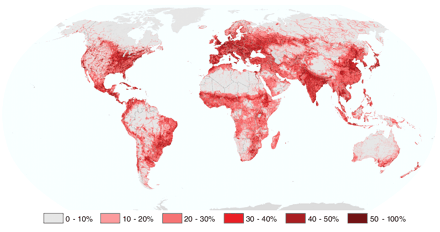As Luigi pointed out, we have a new facility here: mapping. Our idea is to add more value to the posts, by making it easy to see where on Earth they relate to. And by the same token, you can click on the Map page and see all the geo-referenced posts. ((For some reason that I have not been able to figure out, the map is centred on Nigeria, which was the very first post I tagged. At least, it is here. But you can zoom out and drag the map around to find the region you are interested in, so I’m not too bothered.))
We won’t be tagging the little Nibbles, and we aren’t too sure how we are going to cope with single stories that refer to lots of places. Maybe tag just one, maybe think of something else. But for now we think this is, as the young people say, wicked cool, and we hope you find it useful.
As to how I did it, I didn’t have to do very much. The blogging software we use, WordPress, has brilliant people writing plug-ins that add all sorts of functionality. All I did was add one of those — GeoMashup by Dylan Kuhn — and then figure out how to get it to display here. There’s a lot more we could do to improve the map page … and maybe we will.
Meanwhile, I cannot for the life of me figure out why the Map link from Luigi’s post on those long-crowing chickens goes to the right place, but does not show a pin. Most mysterious. some of the others aren’t showing pins either. I need to investigate. So I investigated, and it seems there’s nothing wrong after all. Must be some kind of browser cache voodoo. Enough.
